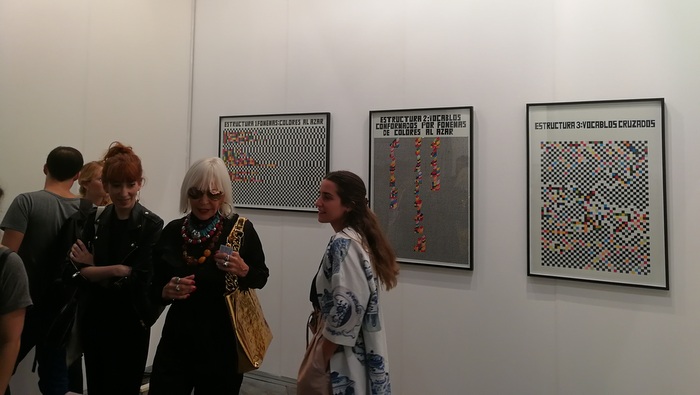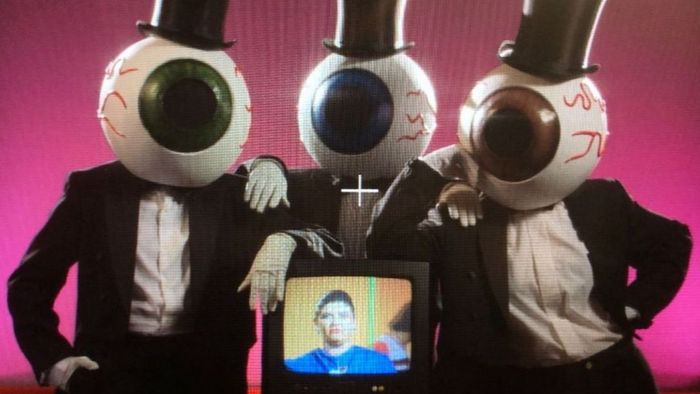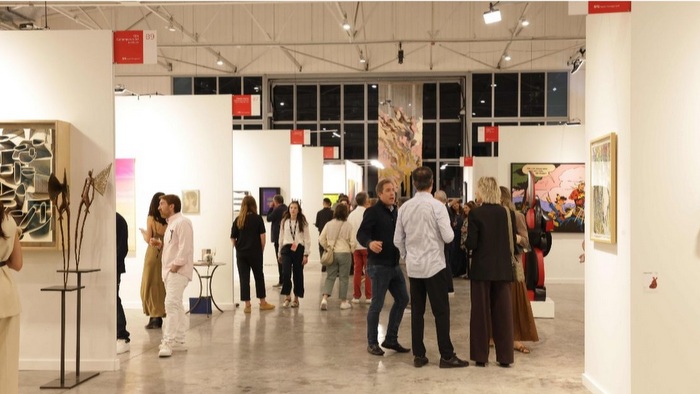A contemporary art fair has many different perspectives: that of artists, that of professionals, that of the public. In turn, these three groups have different characteristics, which, when crossed, give shape to a kaleidoscope of different visions. In fact, the Contemporary Art Fair of Buenos Aires, which last April added its 28th edition, is presented as an opportunity to think about the role of art today, in a world that thinks about economic data, but feels the ancestral call of be an artist
In the architectural redesign and in the proposal of open talks arteBA managed to attract a broad audience, demonstrating that this platform of knowledge and business of contemporary art is a fruitful occasion for all. In fact, if the opening night was the moment for the galleries, the artists, the curators to show off and share with a glass of champagne - this is the case of the Argentine avant-garde artist Marta Minujín, almost exhibiting as attractive herself -, Sunday afternoon was for families, with parents walking the space of the pavilions hand in hand with their children, to ignite soon the flame of artistic curiosity. Local art students, learning how to enter the professional world; Italian exchange traders, attracted by the possibility of knowing a foreign country through its cultural production; journalists documenting for national and international networks; young designers promoting their self-produced art journal in thousand copies ... It is the strength of the fair.
A fair that, in addition to presenting itself as an occasion for exhibition and sale, offered moments of reflection on the role of art in a rapidly changing world, as in the case of the master class "The future of art and technology", which included with the participation of Argentine and foreign professionals and intellectuals, where they reasoned about how the diffusion of the work of art by the artist changes through new technologies. «The cultural industry is disappearing? Technology will give us the chance to free ourselves from analytical intelligence and we could create more culture, but the risk is to create cheap entertainment. Art is fundamental, it is the expression of the creation of beauty that gives us a different contact to this hyper-fast world. It has a primary function for humanity in order to create fields of perception that we did not previously have, "said Argentine business leader Rafael Steinhauser. As a counterpart, the American professor and poet Frederick Turner said: "Man will use technology to develop, as it happened millennia ago, since the era of primates. But only through the amazement of art and nature can you realize the beauty of the world ». For his part, German curator Enrico Bauer commented: «Through technology, art is becoming a democratic process, with much more open access». And the Japanese philosopher and priest Yasuhiko Genku Kimura added: "In evolution, art, science and technology are phases of the same process. Today, in the year of Leonardo, we see how art has impacted life; we do not have to stay in the hyper specialization, but open ourselves to multidisciplinarity, towards a future where art could contribute to interculturality ». And finally the president of arteBA Fundación, Alen Oxenford, concluded: «Art can transform in many ways the actions of people, and the dialogues between them. You put us humble, it forces us to be contemplative, to take our attention away from ourselves for a while. Art unites, can identify many people in the same piece; arteBa is a demonstration of that».
The different perspectives succeeded in restoring a living image of the role of art today as a source of inspiration, both in the specificity of the artistic field and in life. But the vision of affirmed professionals does not convey the whole essence of arteBA, for which the young and fresh look of whoever is going to be the heir of that world is necessary. So the reflections of Laura Guindlin, student of History of Art in the Faculty of Philosophy and Letters of the University of Buenos Aires, curator and critic of Argentine art that works in theory and research on contemporary art, complement the essential idea of the fair and examine whether their attempts at communication and involvement are successful or not.
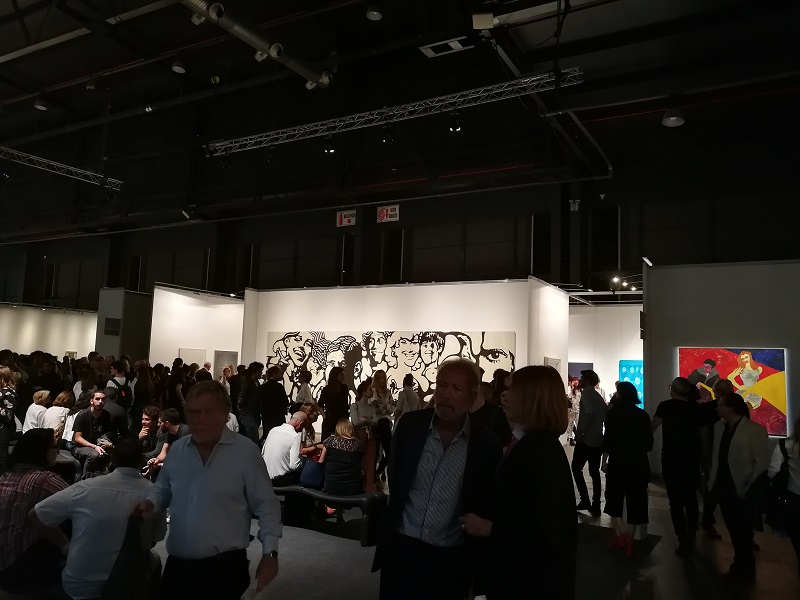
Regarding the past, what did you think of this year's edition?
This edition of ArteBA was particularly interesting compared to the previous ones. There were many new additions that managed to modify the traditional fair format and make it more productive. This is the case of the Bombay Sapphire Utopia section, which replaced the old Barrio Joven and brings together emerging and experimental galleries. This space had its own pavilion, separate from that of the Main Section, and the galleries that were part were not divided with the classic booths, but there was a circular and open design that allowed collective communication between the different proposals. I stand out among the participants to the NASAL Project (Lima-Guayaquil), Image Gallery (Mendoza), NN (La Plata) and Central Gallery (San Pablo). On the other hand, this edition presented an extensive program of lectures and complementary activities that contributed to broaden the analysis of local artistic production and also encouraged different current debates, in addition to the classic cycle of guided visits. In this sense, one of the greatest successes of this fair is to propose a frame of study, research and debate of the arts, instead of dedicating itself solely to the trade of the work.
What does it mean for a student of Art History to have the possibility of getting involved in an event of such importance in the contemporary art scene?
As a student, I find it interesting to have the opportunity to go through different proposals and participate in an event that brings together the different agents of the artistic field. Being able to see how these relations are gestated seems to me necessary, but it is also important to maintain a critical eye and be able to discern between the properly artistic and the social or commercial, since it is a very fine thread where values and interests circulate. It is important as an ideological position to privilege artistic production over sales in an area that originally was designed for trade.
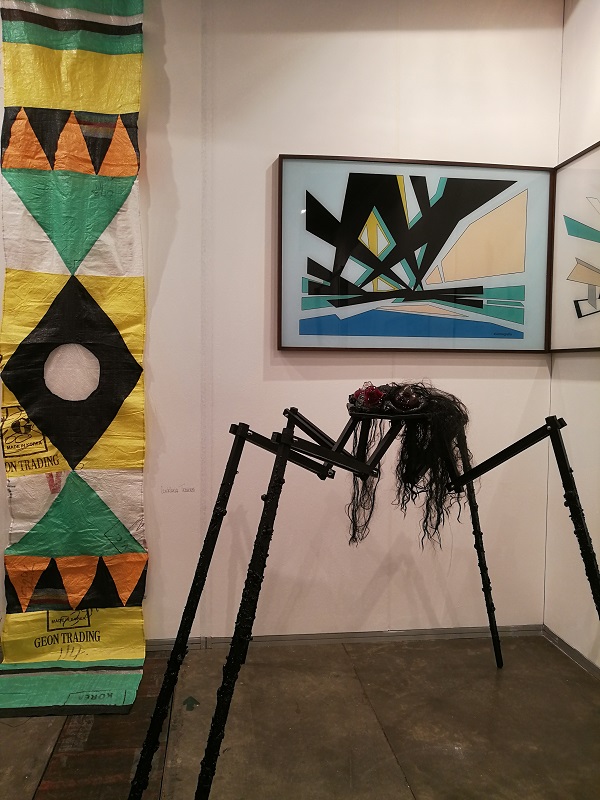
How could institutions improve the involvement of young professionals in the world of contemporary art?
Any platform that allows young art professionals to deepen their knowledge and give them the opportunity to develop will be positive. The spaces that allow this are scarce, and most of the people who do not have the economic and spatial resources face great obstacles that, in short, prevent young people from displaying our potential. However, precisely in youth there is a will that transcends these problems and allows us to find or even create our own possibilities, places and works outside the established circuits. The institutions that are part of the arteBA editions and this same homonymous foundation are able to present inclusive proposals that allow the creation and exhibition of projects in an environment that can be highly beneficial for artists, curators and emerging critics. Calls to present exhibitions, contests and prizes of work or rented internships could be some ways to make this happen.
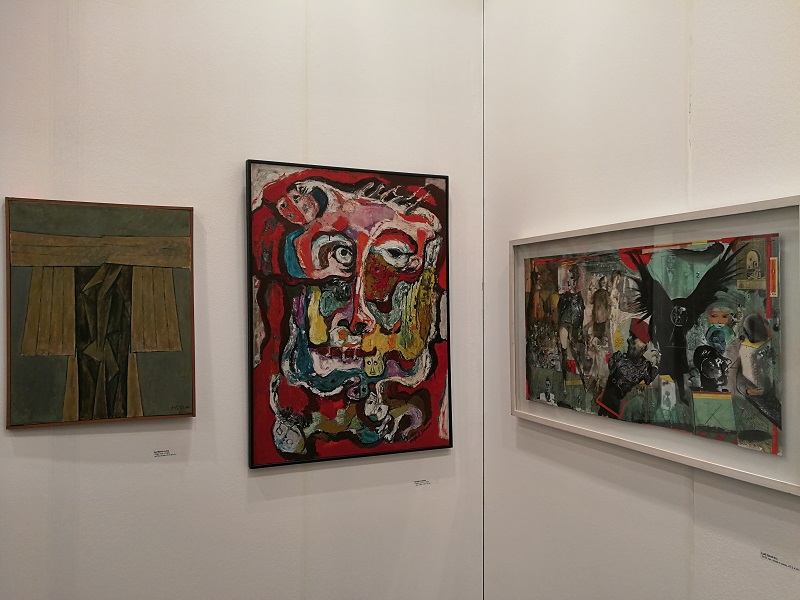
In what way could art be attractive to young people interested in other disciplines?
Art must resonate and produce effects in young people interested in other disciplines as long as it conveys an idea, concept or position that is crossed by other contextual interests where the work is produced. Politics, ideologies and even specific feelings are elements present in a transversal way in society, and affect all spectators regardless of their training. I mean trying to convey real concerns or generate true connections, contrary to certain forms used in a massive way to attract a large audience, where works of art are used simply as marketing tools. In this sense, situations such as debates or conversations about the analysis of artistic works seem to me to be much nobler ways of making art circulate in other areas that are alien to it.
The responses to an event of this size are several, as are the interests and the reasons of the participant. The truth is that arteBA, in its 28th edition, managed to propose itself as a space for reflection, where new pieces and old ideals are available for all those who want to discover. And it shows why man, in his journey of search, development and memory, continues to feel the need to think and represent the world around him through the resources and tools of art. A filter that you can never and will not be able to do without.

